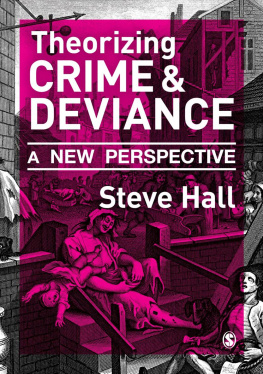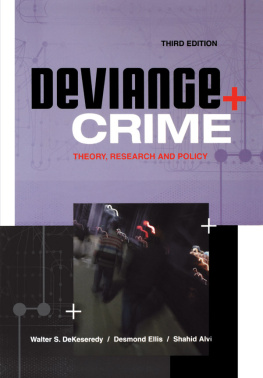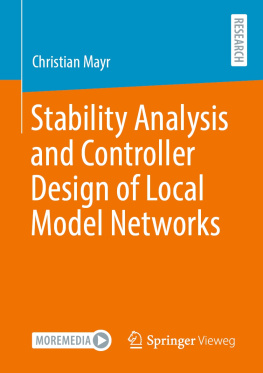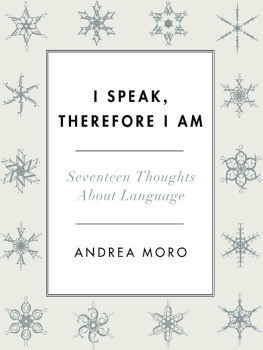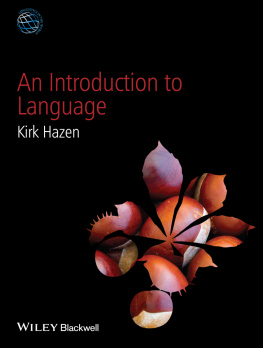Bloomsbury Academic
An imprint of Bloomsbury Publishing Plc
50 Bedford Square
London
WC1B 3DP
UK | 1385 Broadway
New York
NY 10018
USA |
www.bloomsbury.com
Andrea Mayr and David Machin 2012
All rights reserved. No part of this publication may be reproduced or transmitted in any form or by any means, electronic or mechanical, including photocopying, recording, or any information storage or retrieval system, without prior permission in writing from the publishers.
Andrea Mayr and David Machin asserted their right under the Copyright, Designs and Patents Act, 1988, to be identified as Authors of this work.
British Library Cataloguing-in-Publication Data
A catalogue record for this book is available from the British Library.
ISBN: 978-1-4411-9891-4
Library of Congress Cataloging-in-Publication Data
The language of crime and deviance: an introduction to critical linguistic analysis in media and popular culture / Andrea Mayr and David Machin.
p. cm.
Includes bibliographical references and index.
1. Sociolinguistics. 2. Mass media and language3. Language and culture. 4. Discourse analysis. I. Machin, David, Ph. D. II. Title.
P40.M398 2011
306.44dc23
2011020736
The Language of
Crime and Deviance
ALSO AVAILABLE FROM CONTINUUM
Analysing Police Interviews, Elizabeth Carter
Language and Power, Andrea Mayr
The Language of
Crime and Deviance
An Introduction to
Critical Linguistic Analysis in
Media and Popular Culture
ANDREA MAYR
AND
DAVID MACHIN

Contents
Acknowledgements
The authors would like to thank a number of people for their assistance in the design, writing and production of this book.
Thanks go to Jake Scamell and Joseph Paul for producing the line drawings for stills used in this book. Of the team at Continuum, we are grateful to Gurdeep Mattu and Colleen Coalter for their assistance and advice throughout the project. We are also indebted to the anonymous referees who devoted their time to write detailed reports on the proposal.
The authors and the publishers wish to thank the following for permission to use copyrighted material in this book:
Getty Images for the picture of the female drug addict on p. 54 and the picture of the hoodies on p. 63;
Liz Somerville/Photofusion Picture Library for the image of the youth with a knife on p. 142;
Ciaran Barnes/Sunday Life for the images and the Black widow duped friend newspaper page on p. 161;
Glen Marks/Rex Features for the image of the prisoner in a cell on p. 235;
UTV News for the Wife jailed for husband killing article on p. 167;
Daily Mail/Solo Syndication for the Pampered prisoners supplied with 221,726 of PlayStations article on pp. 2347, and for the Womens prisons should all close within a decade article on pp. 2446;
The Times/NI Syndication for the Prison officers fear that Muslim inmates are turning to extremism article on pp. 825.
Every effort has been made to trace the copyright holders, but if any have been inadvertently overlooked, the authors and publishers will be glad to make suitable arrangements at the earliest opportunity.
Transcription conventions
In different parts of this book, we have used passages of spoken interaction for analysis, transcribed in such a way as to capture varying aspects of real speech. Below is a key to the transcription symbols we have used in these passages.
| [ | Interruption and overlap (two speakers talking at the same time) |
| [ ] | Speakers turn completely contained within another speakers turn
e.g. A: Have you turned off [B: yes] the lights? |
| [?] | Unintelligible words |
| CAPS | emphatic stress through capitals |
| ... | short pause |
| [...] | parts of speech omitted |
| ehm | hesitation |
Conventions for capturing non-standard pronunciation
Ahm = I am
an =and
defnly = definitely
doin = doing
Introduction: crime,
deviance and language
T his book is about the language of crime and deviance in the mass media. The relationship between crime and media has been extensively studied in a number of disciplines, most notably criminology, sociology, psychology and media/cultural studies. These have shed much light on the way that the media may distort crime and on the way that some events are defined as crime and others, that appear to have equal gravity, are not. But there has been little systematic enquiry into the mediatized language of crime. The approach we offer in this book therefore focuses on the details of language use in the media, giving us a powerful tool to analyse the intricacies of media representations of crime. These tools allow us to uncover broader ideologies and patterns described in the existing literature from other fields more effectively. They also permit a deeper understanding of how the distortion of crime and deviance is legitimized and naturalized in the media. Additionally, this book draws on visual methods that have been taken from critical linguistics to reveal the details of visual media representations .
Our contemporary societies, early in the twenty-first century, have been described as late modernity (Beck, 1992), an era characterized by uncertainty, instability, and rapid change, in which jobs, families and even identities can be fleeting and unsure. Importantly, late modernity is also a fundamentally mediatized era, in which the mass media not only reflect society but also shape it. In this media environment, images of crime and deviance proliferate. They are both entertaining, due to their dramatic nature and appeal to morbid curiosity about the worst in human nature, and compelling, as they appear to tell us about features of our society that best characterize our sense of insecurity and impermanence. They feed into concerns about change and lack of respect for older values and former ways of doing things. They also feed into our concerns about our own lack of place and safety in our societies. The study of language in representations of crime and deviance is one important way through which we can take apart the details of these representations. We can show precisely how some events are shaped to fit and embody these fears. We can also demonstrate how responsibility for the changes we perceive is glossed over and how actual causes and effects are abstracted through language use, often painting a highly misleading picture of the reality of crime.
Media portrayals of crime and deviance are a source of fear, but also, as we shall see, of fascination and escapism. But most importantly, as we show at times, they can be used by the powerful to distract from their own responsibilities to create safe and supportive societies. Much crime is clearly related to issues of poverty and marginalization. And one of the biggest economic burden on society is caused by corporate crime, which is rarely taken on by the media in the same demonizing way as other forms of crime. All of this is well documented in the existing and growing literature in criminology and sociology, as we shall see. However, a linguistic approach can help to reveal some of the more subtle strategies by which authors persuade us that these are reasonable states of affairs.



